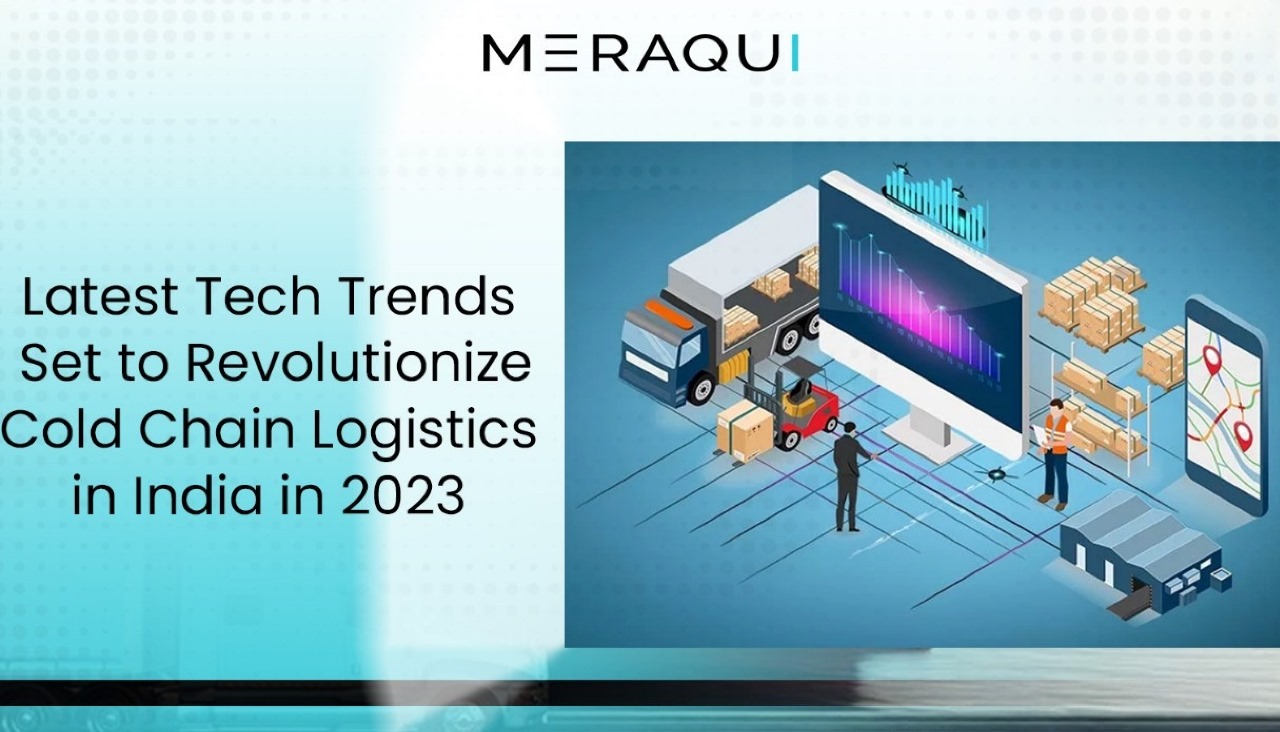
Latest Tech Trends Set to Revolutionize Cold Chain Logistics in India in 2023
Cold Chain Supply (CCS) is one of the current research and development priority areas in Supply Chain Management, and there is a lot of potential for it to grow and an urgent demand for it.
During the projected period of 2020-2025, the India cold chain logistics market is estimated to develop at a CAGR of more than 14%. Cold chain demand is increasing due to expansion in organized retail, processed food, medicines, and a rising movement toward horticulture, among others.
What is Cold Chain Logistics?
Cold chain logistics is the technology and procedure that allows temperature-sensitive goods and products to be transported safely along the supply chain. It significantly relies on science to analyze and account for the relationship between temperature and perishability.
Any product that is known to be “perishable” or is labeled as such will almost certainly require cold chain management. This might contain meat and fish, as well as veggies, medical supplies, and drugs.
Emerging Trends in India in 2023
As the world of logistics and supply chain management continues to change, so has the demand for strong and effective cold chain management solutions. Businesses may now modernize their cold chain supply chain and remain ahead of the competition by utilizing cutting-edge cold chain technology such as payment automation, robots, packaging innovation, warehouse automation, and so on.
People will see discussed cold chain technologies and how it may aid to transform the supply chain along with improvements in these cold chain technologies over the following several years.
- Smart sensors based on AI and ML, as well as real-time tracking
Smart sensors powered by AI and machine learning deliver real-time notifications of temperature, humidity, and other environmental variables to key stakeholders, allowing them to take rapid remedial action and avert losses.
When such incidents are digitally recorded in the system, they aid in assessing the issue and swiftly eliminating gaps to ensure the next batch of items entering the cold chain network is in good condition.
They also maintain track of vehicle maintenance records, and inventory components, and use past data to forecast probable failures. They streamline the cold chain operation and eliminate the need for manual work.
2. IoT
IoT has the ability to completely revolutionize cold chains. Logistics firms may continually keep on top of every stage in the storage and shipping operations by incorporating IoT solutions into cold supply chains, catalyzing huge cost-saving advantages.
Fleet management may analyze and even modify temperature settings on the fly to account for local weather variations and unexpected delays. IoT technologies reduce human error and allow management to address potential problems before they become significant disasters.
Integrating these with a centralized platform may boost efficiency, reduce losses, and improve supply chain transparency and control.
3. Advanced Analytics
For their day-to-day operations, over 73% of logistics managers rely on Excel spreadsheets and manual coordination. As a result, there are hidden costs, increased operational slippages, and a lack of visibility for all supply chain stakeholders.
Companies may obtain insights into their supply chain and discover opportunities for improvement by employing predictive analytics. Analytics, for example, may be utilized to establish the appropriate temperature for the product as well as to monitor temperature changes throughout the cold chain.
Advanced analytics may also be used to estimate demand, allowing businesses to prepare for product supply more effectively. Such analytics can help cold supply chain firms run more effectively while also lowering expenses and enhancing visibility.
4. Blockchain
Blockchain is quickly becoming a popular technology solution for cold supply chain organizations because it provides a transparent and secure platform for managing and tracking inventory as it goes through the supply chain.
When particular requirements are satisfied, smart, digitally coded contracts automatically enact or document important activities, allowing supply chain stakeholders to interact and exchange information (and money) more effectively.
Given the importance of continuous temperature management and monitoring in cold supply chain networks, blockchain has the potential to revolutionize the game. Blockchain is assisting cold supply chain organizations to increase efficiency, improve customer experience, and deliver higher ROI by doing anything from developing trust and quality assurance to effectively detecting faults or inefficiencies in real time.
Meraqui as Cold Chain Logistics Providers
Meraqui provides fulfillment logistics services that are adaptable, scalable, and responsive. We provide world-class B2B and B2C outcomes. Our strategy is to integrate all processes within the distribution center, eliminating excess infrastructure and disruptions while capitalizing on synergies.
You no longer have to be concerned about the storage and transportation of your logistics with our warehousing services. We take great pride in our client’s success and go out of our way to help them reach their full potential.
Our warehouses are all temperature-controlled and humidity-free. Our cold storage units are ideal for storing perishables.
Final Thoughts
The need for cold chain solutions is increasing, and the sector as a whole is on the rise. Cold chain logistics firms decrease temperature-sensitive product waste by enhancing delivery efficiency through digitization, providing complete 360-degree visibility, and harnessing the power of analytics to identify shortages.
Companies must invest in novel technologies ranging from real-time tracking and predictive analytics to cloud-based tracking and blockchain technology in order to assure an unbroken cold chain in 2023. Businesses may modernize their cold supply chain and gain a competitive advantage by using the potential of cold chain technology. As the need for temperature-sensitive items grows, cold chain technology will become increasingly important in the future years.



Leave a Reply